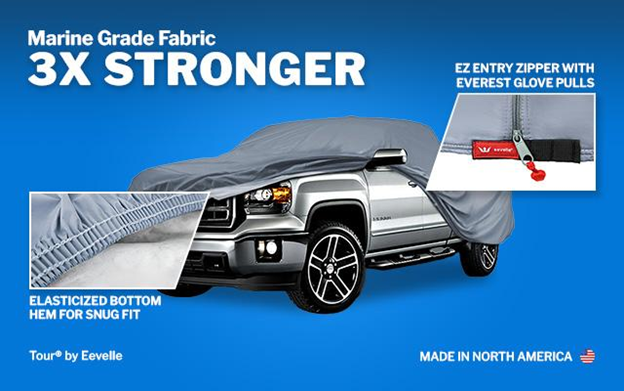When you hear terms like FWD, RWD, AWD, or 4WD, do you wonder, “What exactly do these mean for my driving experience?” Don’t worry; you’re not alone. Understanding these drivetrain types can feel like decoding a foreign language. But by the end of this guide, you’ll have a clear understanding of what each drivetrain does, why it matters, and which one might be the best fit for you. So, buckle up, and let’s dive into the world of drivetrains.
Table of contents
Introduction to Drivetrains
A vehicle’s drivetrain is much like the nervous system in our bodies—it connects the heart (the engine) to the rest of the body (the wheels) and makes movement possible. But just as each person is unique, so too are drivetrains in their designs and capabilities. With the variety of drivetrain types, understanding what each one offers can help you make a better choice for your vehicle. Let’s explore the different types of drivetrains and how they can affect your daily driving experience.
What is a Drivetrain?
A drivetrain is the series of components that transfer power from the engine to the wheels. This includes everything from the transmission to the differential and drive shafts. Think of it as a pathway that guides energy from your car’s engine to make the wheels spin, propelling the vehicle forward.
Why Do Drivetrains Matter?
The type of drivetrain your vehicle has affects several key aspects, including handling, performance, fuel efficiency, and driving comfort. For instance, a 4WD vehicle handles rough terrain much better than a FWD vehicle. So, whether you’re looking for a smooth city drive, a rugged off-road adventure, or something in between, choosing the right drivetrain can make all the difference.
Types of Drivetrains
Vehicles typically come with four drivetrain options: Front-Wheel Drive (FWD), Rear-Wheel Drive (RWD), All-Wheel Drive (AWD), and Four-Wheel Drive (4WD). Each has its own strengths and weaknesses. Let’s break down what makes each one unique.
Front-Wheel Drive (FWD)
In a Front-Wheel Drive (FWD) system, power from the engine is directed to the front wheels only. This setup is commonly found in smaller cars, sedans, and crossovers. But what does this mean for the driving experience?
- Pros: FWD systems generally offer better fuel efficiency and are more affordable. The weight of the engine over the front wheels also improves traction, which is useful for driving in wet or icy conditions.
- Cons: FWD cars often struggle with oversteer (when the rear end loses traction) at high speeds and generally lack the sporty feel and power of RWD or AWD vehicles.
Rear-Wheel Drive (RWD)
Rear-Wheel Drive (RWD) means that the power is directed to the rear wheels. This configuration is popular in sports cars, trucks, and luxury vehicles.
- Pros: RWD provides better balance and handling, especially at higher speeds, making it a popular choice for performance and sports cars. RWD also offers greater acceleration because the weight shifts to the rear wheels, enhancing traction.
- Cons: RWD cars are not ideal for wet or icy roads as they are more prone to losing traction in low-grip conditions. This makes RWD better suited for dry climates or driving enthusiasts looking for performance.
All-Wheel Drive (AWD)
In an All-Wheel Drive (AWD) system, power is directed to all four wheels continuously or as needed. AWD is common in SUVs, crossovers, and some sedans.
- Pros: AWD offers enhanced stability and traction, making it ideal for various weather conditions and light off-road driving. AWD vehicles automatically distribute power between front and rear wheels based on conditions, which makes driving more seamless.
- Cons: AWD systems are often more expensive and less fuel-efficient due to the additional hardware and energy required to power all wheels.
Four-Wheel Drive (4WD)
Four-Wheel Drive (4WD) is similar to AWD but with a key difference: it’s usually manually activated and designed for serious off-road driving.
- Pros: 4WD is incredibly effective on rugged terrain like snow, mud, sand, or rocks. When engaged, all four wheels receive power equally, providing superior grip in challenging conditions.
- Cons: 4WD systems tend to be heavier and less fuel-efficient than AWD and FWD systems. They’re also pricier and often overkill for regular road driving.
Comparing Drivetrains
Now that we’ve introduced each drivetrain type, let’s compare them in terms of performance, handling, fuel efficiency, and suitability for different driving conditions.
Performance & Handling
- FWD: Offers decent handling for daily drives but lacks the sporty edge.
- RWD: Superior handling, especially in dry conditions, and ideal for performance driving.
- AWD: Balanced handling across various terrains, particularly wet or icy conditions.
- 4WD: Best handling on rugged off-road terrain but unnecessary for city driving.
Fuel Efficiency & Cost
- FWD: Generally the most fuel-efficient and cost-effective option.
- RWD: Offers good performance but can be slightly less efficient due to weight distribution.
- AWD: More fuel consumption due to the need to power all wheels.
- 4WD: Least fuel-efficient due to added weight and complexity, but crucial for off-roading.
Weather & Terrain Suitability
Each drivetrain type also offers specific advantages depending on weather and road conditions:
- FWD: Great for city driving and light snow, as it provides good traction.
- RWD: Best for dry, clear roads; performs poorly in snow and rain.
- AWD: Ideal for varying weather conditions, especially rain and light snow.
- 4WD: The ultimate choice for off-road or harsh winter conditions.
Choosing the Right Drivetrain
Choosing a drivetrain depends on where and how you plan to drive:
- For city driving: FWD or AWD might be your best bet.
- For off-road adventures: Opt for a 4WD vehicle.
- For driving enthusiasts: RWD offers superior handling and performance.
- For mixed driving conditions: AWD provides a good balance for urban and mild off-road use.
Pros & Cons of Each Drivetrain
Let’s summarize the advantages and disadvantages of each drivetrain to help you make a clear choice.
- FWD: Affordable, fuel-efficient but lacks performance edge.
- RWD: Great for performance; not ideal for wet or icy roads.
- AWD: Excellent for various conditions; consumes more fuel.
- 4WD: Perfect for off-road, but heavy and fuel-hungry.
Conclusion
Understanding the different drivetrain types—FWD, RWD, AWD, and 4WD—helps you choose a vehicle suited to your needs. Whether it’s efficient city driving, sporty handling, or off-road adventures, each drivetrain has unique strengths. Choose wisely, and you’ll enjoy a safer, smoother driving experience.
FAQs
1. What’s the difference between AWD and 4WD?
AWD powers all four wheels continuously or as needed, making it great for various road conditions. 4WD, however, is manually activated and ideal for off-road.
2. Can I switch between AWD and 4WD in the same vehicle?
No, AWD and 4WD are different systems. AWD operates automatically, while 4WD needs manual activation and is meant for rugged terrain.
3. Which drivetrain is best for snowy conditions?
AWD is generally preferred for snow as it offers better traction. However, 4WD is best for heavy snow or off-road snow driving.
4. Is RWD better for performance?
Yes, RWD vehicles offer superior handling and acceleration, especially in dry conditions, making them popular in performance cars.
5. Does drivetrain affect fuel efficiency?
Yes, FWD is typically the most fuel-efficient. AWD and 4WD systems require more power, thus consuming more fuel.
With this guide, you’re now equipped to choose the right drivetrain based on your driving needs and preferences.




5 thoughts on “Exploring Drivetrain Types: Differences Between FWD, RWD, AWD, and 4WD”
Your article helped me a lot, is there any more related content? Thanks!
my web blog: https://cryptolake.online/crypto7
Thanks for sharing. I read many of your blog posts, cool, your blog is very good.
Thanks for sharing. I read many of your blog posts, cool, your blog is very good.
Huddersfield wolverhampton university jobs jobs focus on textiles and engineering
research.